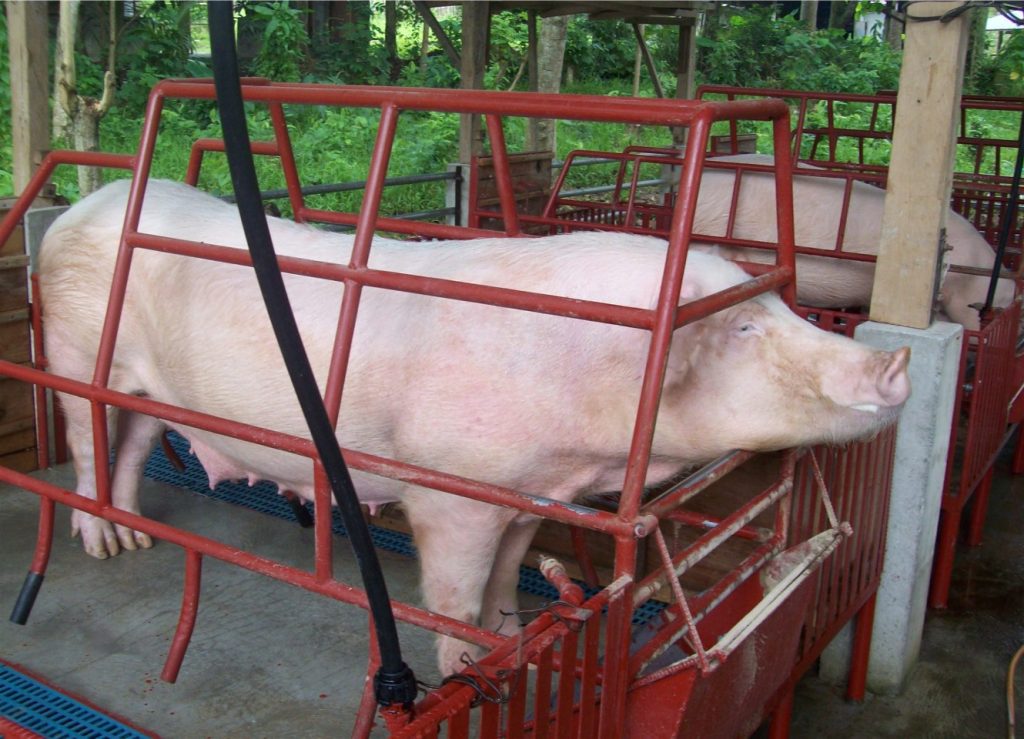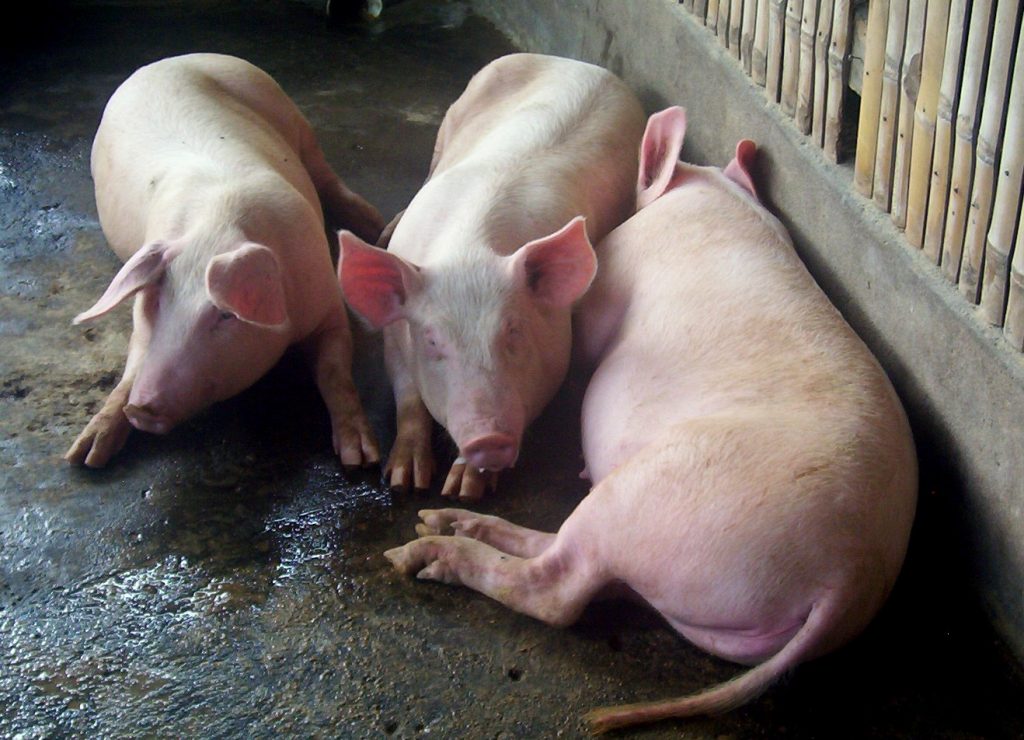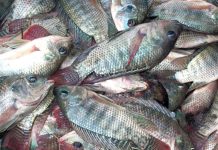
In a recent news briefing in Quezon City, Agriculture Secretary Emmanuel F. Piñol urged traders not to import pork products from so-called “high risk” countries hit by African swine fever (ASF) to protect the country’s local swine industry.
“I am asking importers to show their patriotism by ensuring that they do not import pork from high-risk countries,” Piñol was quoted as saying. “We cannot actually stop (importers) but we can only appeal to them. We are calling on their sense of patriotism as (the swine) industry involves millions of poor Filipino farming families.”
ASF is a viral disease of pigs and wild boar that is usually deadly. Unfortunately, there are no vaccines available nor it can be cured. “For this reason, it has serious socio-economic consequences in affected countries,” the website of the European Food Safety Authority (EFSA) warned.

ASF is endemic in sub–Saharan Africa. In Europe, it has been endemic in Sardinia for several decades. In 2007, outbreaks occurred in Georgia, Armenia, Azerbaijan and the European part of Russia, Ukraine, and Belarus.
Late last year, outbreaks of ASF was reported in China. Some 38,000 hogs were culled and the UN Food and Agriculture Organization (FAO) feared that the problem could spread to other parts in Asia, including the Philippines.
“The threat is real and it could affect an industry which benefits millions of families, mostly small backyard farmers, who raises 15-million heads of hogs every year,” wrote Piñol in his Facebook wall.
As such, he urged Filipinos to buy locally produced pork over imported products. “In the face of the threat of a baffling hog disease which has killed millions of pigs all over the world and whose effect on human health is still unknown, I am appealing to consumers to buy pork and pork-based products produced by local farmers,” he wrote.
“Better still,” he added, “source your requirements locally, that way you not only protect our local hog industry but you also help lower poverty in the countryside.”
The agriculture department has already issued two memoranda “as part of precautionary measures to prevent entry of the disease into the country.” The first one prohibits the use of catering food wastes/left-overs from international and domestic airports and seaports for swill feeding of local swine throughout the country.

The second memorandum temporarily bans the importation of domestic and wild pigs and their products, including pork, meat, and semen particularly those originating from Belgium, China, Hungary, Latvia, Poland, Romania, Russia and Ukraine.
“We have imposed strict Quarantine Protocols to prevent the entry of pork and pork-based products from these eight countries,” Piñol said, adding that the government alone cannot ensure a 100% compliance of the quarantine protocols.
The agriculture department confiscates pork products like ham and bacon coming from those countries affected by ASF for these could serve as carriers of the virus. “We are asking returning Filipino residents, balikbayan and OFWs to not bring in anymore pork products from high-risk areas,” Piñol appealed.
According to Piñol, the Philippines stands out as one of the few countries in the world which is free from animal diseases like the foot-and-mouth disease and ASF.
“The entry of any disease into the country, especially the ASF, whose effect on human health is still being studies, could devastate our hog industry,” Piñol said.
ASF is caused by a unique virus which is distinct from that of classical swine fever and which infects only domestic and wild pigs and a variety of soft bodied ticks. The virus, endemic in Africa, circulates between warthogs and the soft bodied ticks which inhabit their burrows, according to the website, thepigsite.com. The ticks transmit it through all stages of their life cycle and perpetuate it.
“ASF virus is relatively tough and can survive in the environment and in pig carcasses for a long time,” thepigsite.com states. “Curing and smoking pork products does not destroy it. Its main method of spread from country to country is via waste uncooked pork products fed to pigs.
It adds: “Its spread between herds within a country is by direct and, to a lesser extent, indirect contact between pigs. Indirect contact usually involves contamination from dead pig tissues and secretions.”
Humans are not susceptible to the disease. “The typical signs of African swine fever are similar to classical swine fever, and the two diseases normally have to be distinguished by laboratory diagnosis,” EFSA explains.
Symptoms include fever, loss of appetite, lack of energy, abortions, internal bleeding, with hemorrhages visible on the ears and flanks. Sudden death may occur. Severe strains of the virus are generally fatal (death occurs within 10 days). Animals infected with mild strains of African swine fever virus may not show typical clinical signs.
The agriculture department said ASF is not a zoonotic disease. But still it urged Filipino swine raisers to strengthen and strictly implement farm biosecurity measures.
“The public is enjoined to support the government’s efforts by reporting to veterinary authorities any unusual pig mortalities, pork smuggling activities or meat items hand-carried by travelers from affected countries,” the DA technical advisory said.
The DA has listed the swine industry as one of the biggest contributors to the country’s agricultural growth. It posted over 16% increase in gross earnings, owing to the increasing demand for pork and production expansion.
Pork, the culinary name for meat from the domestic pig, is one of the most commonly consumed meats worldwide. It is eaten both freshly cooked and preserved. Curing extends the shelf life of the pork products. Hams, smoked pork, gammon, bacon and sausage are examples of preserved pork.
In the Philippines, like in other Asian countries, the pork is preferred over beef for economic and aesthetic reasons; the pig is easy to feed and is not used for labor. The colors of the meat and the fat of pork are regarded as more appetizing, while the taste and smell are described as sweeter and cleaner. It is also considered easier to digest. In rural provinces, “lechon” (roasted pig) is a popular tradition shared to celebrate important occasion and to form bonding.
Despite being almost exclusively without government subsidy, the swine industry is the second leading contributor to Philippine agriculture – after rice. A position paper said: “The strong growth in demand for pork has the potential to increase income opportunities and alleviate poverty among rural and agricultural households in the Philippines, where rural poverty remains high.”
About 71% of the swine population are raised in backyard farms while 29% are in commercial farms. In almost every rural household in the Philippines, swine raising is a very popular enterprise, according to Roy C. Alimoane, the director of the Davao-based Mindanao Baptist Rural Life Center (MBRLC) Foundation, Inc.
After all, no other backyard animal has the same versatility as the swine. In the past, a farm family almost always invested their wealth in a pig. After all, out from pigs you can get pork, bacon, and sausage. They also acted as refuse bin, eating all the scraps and family’s leftovers. When asked if the head of the family has any money, the usual reply is: “I don’t have. All my money is in the pig.”
When people stopped raising pigs, they made a replica where they could “put their money in.” In the time, the practice of saving money in a pig came into existence and was called as “piggy bank.”
Pigs are not only for eating and a possible solution to financial woes. In fact, they are also very important in medicine. Their heart valves, especially treated and preserved, can be surgically implanted into humans to replace heart valves weakened by disease and injury. Pig pancreas glands are an important source of insulin hormone used in the treatment of diabetes.
Most Filipinos raised native pigs which to some is not a profitable venture. But in recent years, there are already Filipinos who are raising upgraded native pigs. The Cavite-based International Institute of Rural Reconstruction reported that most of the upgraded pigs raised in the backyards “are fed mostly with rice bran and kitchen wastes.”
This kind of raising is now “a great part of the existing swine industry in the Philippines.”






